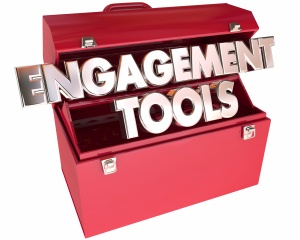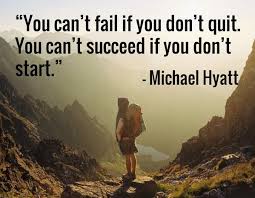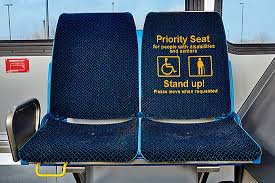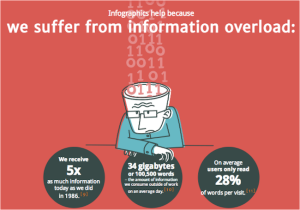 Anyone watching television or engaged in community conversations in recent months knows that our communities are entering into another period of time punctuated by values. Some people are talking about life, liberty and happiness. Others of us are focused on equality versus freedom (which are two values that are somewhat mutually exclusive). Perhaps, this elevated values debate is because our country is heading into a divisive Presidential election year. Or maybe it is because big policy debates are underway about LGBTQ and gun rights issues. Regardless, all of this talk has me thinking about the role of values and your non-profit organization’s resource development program.
Anyone watching television or engaged in community conversations in recent months knows that our communities are entering into another period of time punctuated by values. Some people are talking about life, liberty and happiness. Others of us are focused on equality versus freedom (which are two values that are somewhat mutually exclusive). Perhaps, this elevated values debate is because our country is heading into a divisive Presidential election year. Or maybe it is because big policy debates are underway about LGBTQ and gun rights issues. Regardless, all of this talk has me thinking about the role of values and your non-profit organization’s resource development program.
Whenever I facilitate a strategic planning process for a client, regardless of which planning model I use, the process typically starts off with assessment of the current state and quickly rolls into facilitated discussions about mission, vision and organizational values. I always find it interesting that board volunteers find it easy to talk about mission and vision, but they generally seem to struggle with the values piece.
I suppose this shouldn’t surprise any of us. After all, values discussions can be emotional. Consider the following famous expressions about values:
- “Give me liberty or give me death!” ~Patrick Henry
- “Possessions, outward success, publicity, luxury – to me these have always been contemptible. I believe that a simple and unassuming manner of life is best for everyone, best for both the body and the mind.” ~Albert Einstein
- “Only men would think of cutting themselves to determine who the packleader is. Idiots.” ~Christopher Paolini
So, a values discussion can be emotional. Got it! And then a planning facilitator like me comes along and tells your organization it is important to come up with a list of “shared values.” I guess when I look at it from this perspective, it totally makes sense that people want to punt on this exercise.
Regardless of how difficult this might be, it is still important.
Why? Well, I think Roy Disney probably put it best when he said:
“It’s not hard to make decisions when you know what your values are.”
 All of this gets me thinking about the countless discussions I’ve been a part of throughout the years with non-profit staff, boards and fundraising volunteers where difficult fundraising decisions were being made. The following are just a few examples:
All of this gets me thinking about the countless discussions I’ve been a part of throughout the years with non-profit staff, boards and fundraising volunteers where difficult fundraising decisions were being made. The following are just a few examples:
- Should a gift from Big Tobacco be accepted when the organization runs anti-smoking and healthy life skills programming with its youth clients?
- Should a named gifts contract be signed with a donor who wants to put a Bible quote on the outside of the building when the organization is secular and committed to serving everyone in the community?
- Should a pledge be booked to one campaign versus another fundraising activity when a donor is clear about the benefits they desire and fuzzy about their intent; all of which is juxtaposed against staff wishing to achieve the goals laid out in their individual performance plans?
UGH!
Of course, the easy answer is always . . . “What do your organizational policies say about this issue?”
However, weren’t those policies shaped and developed in a crucible of shared organizational values? I hope so.
Moreover, how many times have you dusted off those policy binders only to find they don’t speak clearly or directly to your issue? When this happens, then you’re right back where you started . . . stuck and left with your organization’s shared values.
There seem to be a number of different schools of thought on the question of fundraising values.
- Some people believe your fundraising program should align with the organization’s shared values (hopefully found in your strategic planning document)
- Other people believe your fundraising program should align with the organization’s shared values, but it should also have a set of supplemental values focused specifically on the unique activities stemming from resource development activities
- Still others believe that fundraising staff come with a set of values that bind them together as a profession
The Association of Fundraising Professionals subscribe to the third school of thought and have this to say about values:
“An ethical fundraiser aspires to: Observe and adhere to the AFP Code and all relevant laws and regulations; Build personal confidence and public support by being trustworthy in all circumstances; Practice honesty in relationships; Be accountable for professional, organizational and public behavior; Be transparent and forthcoming in all dealings; and, Be courageous in serving the public trust.”
To be honest, I’ve never operated under any one of these schools of thought. I guess my career has been guided and shaped by a hybrid (aka mishmash) of these ideas.
 I’ve always taken the AFP ethics/values statement to heart, embraced my organization’s set of shared values, and superimposed my own set of individual values. As an Eagle Scout, my individual values have always been rooted in the 12-points of the Scout Law (e.g. trustworthy, loyal, helpful, friendly, courteous, kind, obedient, cheerful, thrifty, brave, clean and reverent).
I’ve always taken the AFP ethics/values statement to heart, embraced my organization’s set of shared values, and superimposed my own set of individual values. As an Eagle Scout, my individual values have always been rooted in the 12-points of the Scout Law (e.g. trustworthy, loyal, helpful, friendly, courteous, kind, obedient, cheerful, thrifty, brave, clean and reverent).
However, after some thoughtful consideration, I’m left worried that this approach could result in conflict. After all, what happens when an organizational value is in conflict with an individual value?
My best advice to those of you who care about values and the impact these potential conflicts might have on your organization is as follows:
- Invest time in developing your organization’s list of shared values
- Incorporate these values into your various systems (e.g. recognition, compensation, recruitment, etc)
- Integrate these shared values into your supplemental planning documents (e.g. resource development plan, baord development plan, marketing plan, individual performance plans, etc)
- Start every policy development exercise with a discussion about values
- Find a way to talk about your organization’s shared values in every board meeting (e.g. generative discussions, CEO report, committee reports, etc)
- Most importantly, build an organizational culture where it is safe for people to talk about their values in the context of shared organizational values (keeping in mind that your board is in a constant state of flux with volunteers coming and going)
To those of you who don’t care about this topic, I encourage you to turn on your television and watch some of the news coverage focused on what’s happening in Congress in the wake of the Orlando mass shooting. If you don’t want your non-profit board room to look like that, then I suggest you start caring about the power of values.
Has your organization had to deal with a difficult decision recently? Did values play a role in fueling the conflict or solving the problem? If so, please use the comment box to share your thoughts and experiences. We can all learn from each other.
Here’s to your health!
Erik Anderson
Founder & President, The Healthy Non-Profit LLC
www.thehealthynonprofit.com
erik@thehealthynonprofit.com
http://twitter.com/#!/eanderson847
http://www.facebook.com/eanderson847
http://www.linkedin.com/in/erikanderson847


 This is part five in a five part series that I started last week with two posts titled:
This is part five in a five part series that I started last week with two posts titled: This is part four in a five part series that I started a few weeks with two posts titled:
This is part four in a five part series that I started a few weeks with two posts titled: Last week in a post titled “
Last week in a post titled “ Oh, well let me count the reasons . . .
Oh, well let me count the reasons . . . I have no idea why this is so scary for so many non-profit staff and board volunteers. It doesn’t have to be a confrontation. Here are a few talking points:
I have no idea why this is so scary for so many non-profit staff and board volunteers. It doesn’t have to be a confrontation. Here are a few talking points: If the reasons given by your board volunteer aren’t things beyond anyone’s control (e.g. family member illness, work-related challenges, etc) and they simply don’t feel comfortable with solicitation, then ask them to get heavily involved in cultivation (e.g. engaging new prospective supporters) and stewardship (e.g. showing existing donors gratitude and return on investment) activities. (Note: don’t simply let them focus on other non-fundraising activities like programming or marketing)
If the reasons given by your board volunteer aren’t things beyond anyone’s control (e.g. family member illness, work-related challenges, etc) and they simply don’t feel comfortable with solicitation, then ask them to get heavily involved in cultivation (e.g. engaging new prospective supporters) and stewardship (e.g. showing existing donors gratitude and return on investment) activities. (Note: don’t simply let them focus on other non-fundraising activities like programming or marketing) Sometimes we can’t fix the problem. Board members are people, too. Their parents get sick. Their marriages falter. They end up with a new boss who demands more from them.
Sometimes we can’t fix the problem. Board members are people, too. Their parents get sick. Their marriages falter. They end up with a new boss who demands more from them. Last week, British voters stunned the world in a number of different ways. First, they voted in a non-binding referendum to invoke
Last week, British voters stunned the world in a number of different ways. First, they voted in a non-binding referendum to invoke  Communications experts refer to this experience as “
Communications experts refer to this experience as “ So, if you are still with me, you might be wondering what can be done to improve the likelihood that donors, board volunteers and staff are hearing (and understanding) what your organization needs them to know. While I am not a communications expert, here are a few thoughts:
So, if you are still with me, you might be wondering what can be done to improve the likelihood that donors, board volunteers and staff are hearing (and understanding) what your organization needs them to know. While I am not a communications expert, here are a few thoughts: Anyone watching television or engaged in community conversations in recent months knows that our communities are entering into another period of time punctuated by values. Some people are talking about life, liberty and happiness. Others of us are focused on equality versus freedom (which are two values that are somewhat mutually exclusive). Perhaps, this elevated values debate is because our country is heading into a divisive Presidential election year. Or maybe it is because big policy debates are underway about LGBTQ and gun rights issues. Regardless, all of this talk has me thinking about the role of values and your non-profit organization’s resource development program.
Anyone watching television or engaged in community conversations in recent months knows that our communities are entering into another period of time punctuated by values. Some people are talking about life, liberty and happiness. Others of us are focused on equality versus freedom (which are two values that are somewhat mutually exclusive). Perhaps, this elevated values debate is because our country is heading into a divisive Presidential election year. Or maybe it is because big policy debates are underway about LGBTQ and gun rights issues. Regardless, all of this talk has me thinking about the role of values and your non-profit organization’s resource development program. All of this gets me thinking about the countless discussions I’ve been a part of throughout the years with non-profit staff, boards and fundraising volunteers where difficult fundraising decisions were being made. The following are just a few examples:
All of this gets me thinking about the countless discussions I’ve been a part of throughout the years with non-profit staff, boards and fundraising volunteers where difficult fundraising decisions were being made. The following are just a few examples: I’ve always taken the AFP ethics/values statement to heart, embraced my organization’s set of shared values, and superimposed my own set of individual values. As an Eagle Scout, my individual values have always been rooted in the 12-points of the Scout Law (e.g. trustworthy, loyal, helpful, friendly, courteous, kind, obedient, cheerful, thrifty, brave, clean and reverent).
I’ve always taken the AFP ethics/values statement to heart, embraced my organization’s set of shared values, and superimposed my own set of individual values. As an Eagle Scout, my individual values have always been rooted in the 12-points of the Scout Law (e.g. trustworthy, loyal, helpful, friendly, courteous, kind, obedient, cheerful, thrifty, brave, clean and reverent).